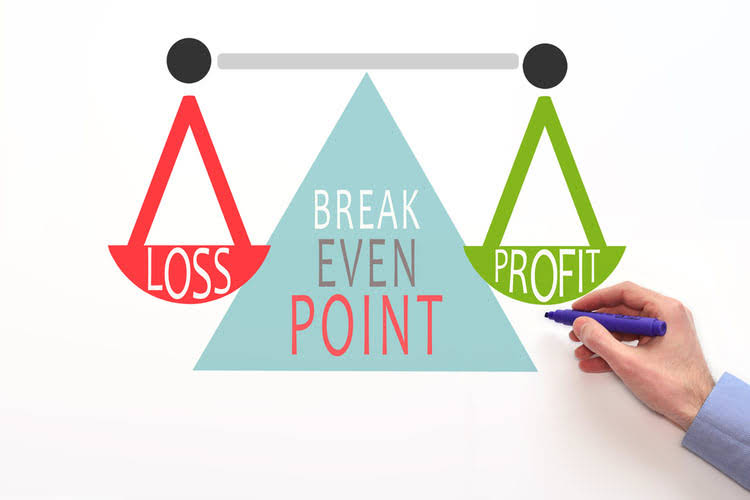
Residual value is the estimated salvage value at the end of the useful life of the asset. And the rate of depreciation is defined according to the double declining balance method estimated pattern of an asset’s use over its useful life. You can repeat these calculations for each subsequent year of the asset’s useful life.
- After all, most assets depreciate faster in their early years of service, and slower in their later years of service.
- When the depreciation rate for the declining balance method is set as a multiple, doubling the straight-line rate, the declining balance method is effectively the double-declining balance method.
- Then come back here—you’ll have the background knowledge you need to learn about double declining balance.
- Depreciation is an accounting process by which a company allocates an asset’s cost throughout its useful life.
- In the last year, ignore the formula and take the amount of depreciation needed to have an ending Net Book Value equal to the Salvage Value.
These are generally only needed for mobile devices that don’t have decimal points in their numeric keypads. So if you are on a desktop, you may find the calculator to be more user-friendly and less cluttered without them. Enter the asset’s estimated salvage value at the end of its useful life. Note that my expertise is in creating online calculators, not necessarily in all of the subject areas they cover. While I do research each calculator’s subject prior to creating and upgrading them, because I don’t work in those fields on a regular basis, I eventually forget what I learned during my research.
Declining Balance Depreciation Formulas
Another thing to remember while calculating the depreciation expense for the first year is the time factor. The next chart displays the differences between straight line and double declining balance depreciation, with the first two years of depreciation significantly higher. However, using the double declining depreciation method, your depreciation would be double that of straight line depreciation. Due to the accelerated depreciation expense, a company’s profits don’t represent the actual results because the depreciation has lowered its net income.

Similarly, compared to the standard declining balance method, the double-declining method depreciates assets twice as quickly. Declining Balance Depreciation is an accelerated cost recovery (expensing) of an asset that expenses higher amounts at the start of an assets life and declining amounts as the class life passes. The amount used to determine the speed of the cost recovery is based on a percentage. The most common declining balance percentages are 150% (150% declining balance) and 200% (double declining balance).
Example of Double Declining Balance Depreciation in Excel
Therefore, the first year depreciation expense for the $10,000 machine would be equal to $4,000 (.40 X 10,000) — provided the asset was placed in service on January 1, of that year. After a five year recovery period, you’ve completely written it off. Doing some market research, you find you can sell your five year old ice cream truck for about $12,000—that’s the salvage value. It is important to note that we apply the depreciation rate on the full cost rather than the depreciable cost (cost minus salvage value).
For the second year of depreciation, you’ll be plugging a book value of $18,000 into the formula, rather than one of $30,000. Next year when you do your calculations, the book value of the ice cream truck will be $18,000. Recovery period, or the useful life of the asset, is the period over which you’re depreciating it, in years. Accountingo.org aims to provide the best accounting and finance education for students, professionals, teachers, and business owners. Dividing 100% by 20% gives us the estimated useful life of 5 years.
Sum of Years’ Digits Depreciation
This shifts the asset to the income statement from the balance sheet. Enter the straight line depreciation rate in the double declining depreciation formula, along with the book value for this year. If something unforeseen happens down the line—a slow year, a sudden increase in expenses—you may wish you’d stuck to good old straight line depreciation. While double declining balance has its money-up-front appeal, that means your tax bill goes up in the future.
When we get to the last year of the asset’s life, we ignore the formula. With declining balance methods of depreciation, when the asset has a salvage value, the ending Net Book Value should be the salvage value. Under Straight Line Depreciation, we first subtracted the salvage value before figuring depreciation.
Double Declining Balance Depreciation Formulas
To calculate the double-declining depreciation expense for Sara, we first need to figure out the depreciation rate. The following section explains the step-by-step process for calculating the depreciation expense in the first year, mid-years, and the asset’s final year. This is because, unlike the straight-line method, the depreciation expense under the double-declining method is not charged evenly over the asset’s useful life. Companies will typically keep two sets of books (two sets of financial statements) – one for tax filings, and one for investors.
- If the selected year is either the first or final year, the depreciation expense will be prorated based on what month of the year the asset was placed in service.
- Failure to pay can significantly hurt the borrower’s credit score and may result in the sale of investments or other assets to cover the outstanding liability.
- Another thing to remember while calculating the depreciation expense for the first year is the time factor.
- If something unforeseen happens down the line—a slow year, a sudden increase in expenses—you may wish you’d stuck to good old straight line depreciation.
- There are two ways that businesses can account for the expense of their long-lived assets.
It is also useful when the intent is to recognize more expense now, thereby shifting profit recognition further into the future (which may be of use for deferring income taxes). To create a depreciation schedule, plot out the depreciation amount each year for the entire recovery period of an asset. Under IRS rules, vehicles are depreciated over a 5 year recovery period. Now you’re going to write it off https://www.bookstime.com/ your taxes using the double depreciation balance method. Double declining balance depreciation isn’t a tongue twister invented by bored IRS employees—it’s a smart way to save money up front on business expenses. Sara wants to know the amounts of depreciation expense and asset value she needs to show in her financial statements prepared on 31 December each year if the double-declining method is used.
How do you calculate double declining depreciation?
Enter the purchase cost the property, not including the value of any land that came with it. Follow me on any of the social media sites below and be among the first to get a sneak peek at the newest and coolest calculators that are being added or updated each month. If you have a question about the calculator’s operation, please enter your question, your first name, and a valid email address. If you would like to save the current entries to the secure online database, tap or click on the Data tab, select “New Data Record”, give the data record a name, then tap or click the Save button.
Typically, accountants switch from double declining to straight line in the year when the straight line method would depreciate more than double declining. For instance, in the fourth year of our example, you’d depreciate $2,592 using the double declining method, or $3,240 using straight line. Your basic depreciation rate is the rate at which an asset depreciates using the straight line method.

